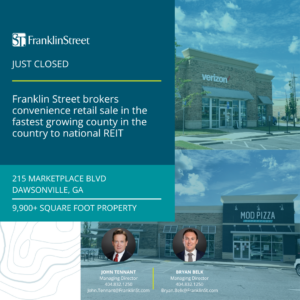WASHINGTON, DC-The commercial real estate industry knew the Federal Reserve Bank was going to end its $85 billion-a-month bond buying program sooner or later. The reaction of the markets in spring when the Fed said the time was nigh, though, left many anxious at how it would be handled and whether the economy was strong enough to absorb it.
On Wednesday, the Fed put its cards on the table and the CRE community saw nothing to cause dismay. Briefly, the Federal Reserve has said it will scale back the program by $10 billion a month, starting in January 2014. Its asset purchases will now consist of $35 billion in mortgage-backed securities and $40 billion in longer-term Treasurys.
The markets responded with unadulterated joy at this modest plan, with the S&P 500 posting its biggest gain in months.
The commercial real estate industry is also pleased, not just at the slow-but-steady pace the Fed apparently is taking but also that finally a roadmap of sorts has appeared.
Reactions fall in one or more of the following:
It’s good news. Really.
“Everyone in the markets understood that the Fed couldn’t grow its balance sheet by a trillion a year in perpetuity,” Brian Olasov, managing director of McKenna Long & Aldridge LLP tells GlobeSt.com. “This is the shoe that had to drop.”
But people who grieve that the punch bowl is being taken away need to look at the bigger picture. As Olasov explains: It’s understood that additional tapering will be dictated by an increased economic pace. “That additional economic activity translates into a higher demand for CRE, which should push rental revenues.”
Finally some certainty.
First we get a budget from Congress. Now the Fed is tipping its hand about its monetary plans—which are not as bad as some had feared, says Bill Baumann, senior managing director at Kiser Group.
“The inherent fear among commercial real estate investors [has been] that as the Fed begins to wind down its bond-buying program, suddenly interest rates will skyrocket, and, in turn, stifle liquidity and investment just as we’re returning to a more normal lending and investing environment,” he says.
The good news about the Fed’s announcement is that there is now some certainty about how it, at least initially, plans to taper, and it’s in gradual, not excessive cuts, Baumann says. “This should give commercial real estate investors some comfort and some time to adjust and plan for future investment.”
The markets have already priced in tapering.
That is the view of Drew Jennewein, associate for Franklin Street Capital Advisors, based in part on the fact that the 10-year treasury rate has not risen above 3%.
“Reducing bond buying by $10 billion is significant but not a drastic cut,” he tells GlobSt.com. “Short term interest rates will continue to stay low, and the fact that the 10 year rate hasn’t spiked is very positive for the economy.”
And maybe acquisition activity will pick up.
This is how Seth Weissman, a partner at Jeffer Mangels Butler & Mitchell LLP thinks this might play out.
The conventional wisdom is that low rates have increased purchasing power, but also inflated asset values, making some acquisitions a bit less attractive than, say, 12-24 months ago, he tells GlobeSt.com.
“If the Fed’s activities lead to increased short term interest rates, as expected, some of the recent froth may come off the market, and may slow down general economic growth.” But, he continues, there is still investment capital interested in stable returns. “A small retrenchment in asset value may be just the ticket to bring solid, professional, operators to office and retail assets, and leave enough in the budget–even with higher debt service costs–for them to provide necessary and desirable upgrades to attract and retain worthy tenants,” he concludes.
Bigger issues will appear as tapering increases though.
Rates on the 10-year treasury may continue to creep up as 2014 continues and bond buying is scaled down even further, Franklin Street Capital’s Jennewein says. “This will have a significant effect on the real estate market, as higher mortgage rates will translate to higher cap rates, bringing down property values.”
Ultimately, Jennewein concludes, the tapering is healthy for the markets as a whole. “I think a bubble has been developing in the multifamily market particularly. Real estate has appreciated a rather drastic rate over the last 18 months at what I consider to be an unsustainable pace.” As long as the economy continues to improve, he says, real estate will gain in value even despite rising cap rates, “but at much more reserved pace.” Download PDF



